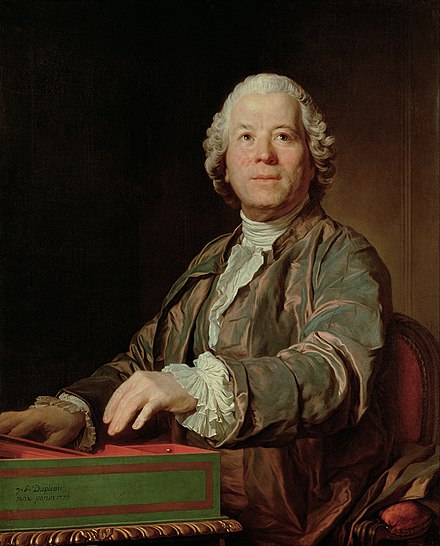Table of Contents
Introduction
In this article I would like to talk to you in the most practical and concise way possible about the figures of Christoph Willibald Gluck, initiator of musical Classicism and opera composer of the eighteenth century, and Raineri De’ Calzabigi, poet and central figure of the processes of musical reform implemented by the German composer. I will try to spare you those notions that you could find anywhere online and go straight to the highlights of their biography.

Christoph Willibald Gluck And Ranieri De’ Calzabigi
As we anticipated in the introduction, much of the operatic revolution operated by Gluck (1714-1787) is associated with the figure of the poet Ranieri de’ Calzabigi (1714-1795): with him he organized an ambitious musical project, which is mainly divided into three works written over about a decade: Orfeo ed Euridice (1762), Alceste (1767) and Paride ed Elena (1770). The rich prefaces to the Alceste, probably the work of Raineri, summarize the artistic belief of the two authors: the first was to reform the work through a holistic approach that ranged from the design of the work to that of its staging (in this way the distortions of theatrical reworkings were avoided); the second, was to put the composer in dialogue with the poet, so that they operated in respect of each other’s art.
Opera Seria And The Gluckian Reform
The genre of Opera Seria had long been in decline. This genre, as we saw in a previous article that you find here, was born in Italy and from there had assumed, in the eighteenth century, European scope. Gradually the genre lost its prestige, and scholars such as Arthur Hutchings identified the causes of this decline in repetitiveness: according to the English musicologist, the work had been repeated for too long in the same way and put too long away from the natural process of fertilization (a word used by Hutchings himself) to which a work must necessarily meet to generate new life. This critical trend is not new: these are reasons that already in the Enlightenment, with Francesco Algarotti, were highlighted to contest the degenerations of this artistic genre. With Gluck we see a progressive reflection of the work to the new social and cultural subjects of Europe at the end of the century (the new archaeological discoveries in Pompeii and Herculaneum contributed to the actualization of the themes related to classical antiquity).

The Alceste
Alceste (1767) is among the most appreciated and acclaimed works of the Gluckian reform. His first performance took place in the Burgtheater in Vienna, with none other than Antonio Salieri on the harpsichord.

The success was resounding, in particular among the accounts of the time we read the amazement of the public for the new synthesis implemented in the representation, which no longer provided for slender virtuosity. Later, by virtue of the resounding success, there were fifty replicas of the show; in 1776 the opera was performed in Paris in a reinterpretation in the French language, which is the best known today.

Albert Edelfelt – Aino Ackté as Alcestis on the Banks of the Styx.
Below I propose a listening and reading of the preface in the first printed score.
ROYAL HIGHNESS! When I began to make the music of the Alceste I proposed to strip it at all of all those abuses that, introduced either by the misunderstood vanity of the Singers, or by the too much complacency of the Masters, have long disfigured the Italian Opera, and of the most pompous and most beautiful of all the shows, make it the most ridiculous and the most boring. I thought of restricting the music to her true office of serving poetry,
Alceste, printed preface of the first performance.
for the expression and for the situations of the fable, without interrupting the action or cooling it with unnecessary superfluous ornaments, and I would believe that she should do what above a well correct and well-disposed drawing the vivacity of the colors and the well-assorted contrast of the lights and shadows that serve to animate the figure without altering it. the contours. I imagined that the symphony should prevent the spectators of the action it has to represent, and form, to put it this way, the argument: that the concert of the instruments has to regulate itself in proportion to the interests and passion, and not leave that sharp gap in the dialogue between the aria and the recitative, which does not cut off the period in contradiction, nor does it interrupt the strength and heat of the action badly by the way. […]
Of this work there is an urtext piano reduction, very well made. The disappeared costs a little, but it is absolutely worth having it in your library as it represents a fundamental study tool to rediscover the languages of the work to the instrument. Studying this score allows not only to have under your fingers the essential tools of the rhetoric and technique of Italian opera singing, but also to appropriate those contributions through which the Gluckian score has managed to give new life to the operatic genre. If you buy the score from the banner that I leave you above and below, a small percentage will go to support this blog.
Conclusions
For this article on the Gluckian reform is everything, do not forget to subscribe to our blog through the form dedicated to notifications so as not to miss the news on the subject. See you in tomorrow’s article!
- History Of The Piano – The Fortepiano - July 12, 2022
- Curt Sachs – History Of Organology At a Glance - July 8, 2022
- Giuseppe Verdi – Rigoletto, Il Trovatore, La Traviata - June 29, 2022
